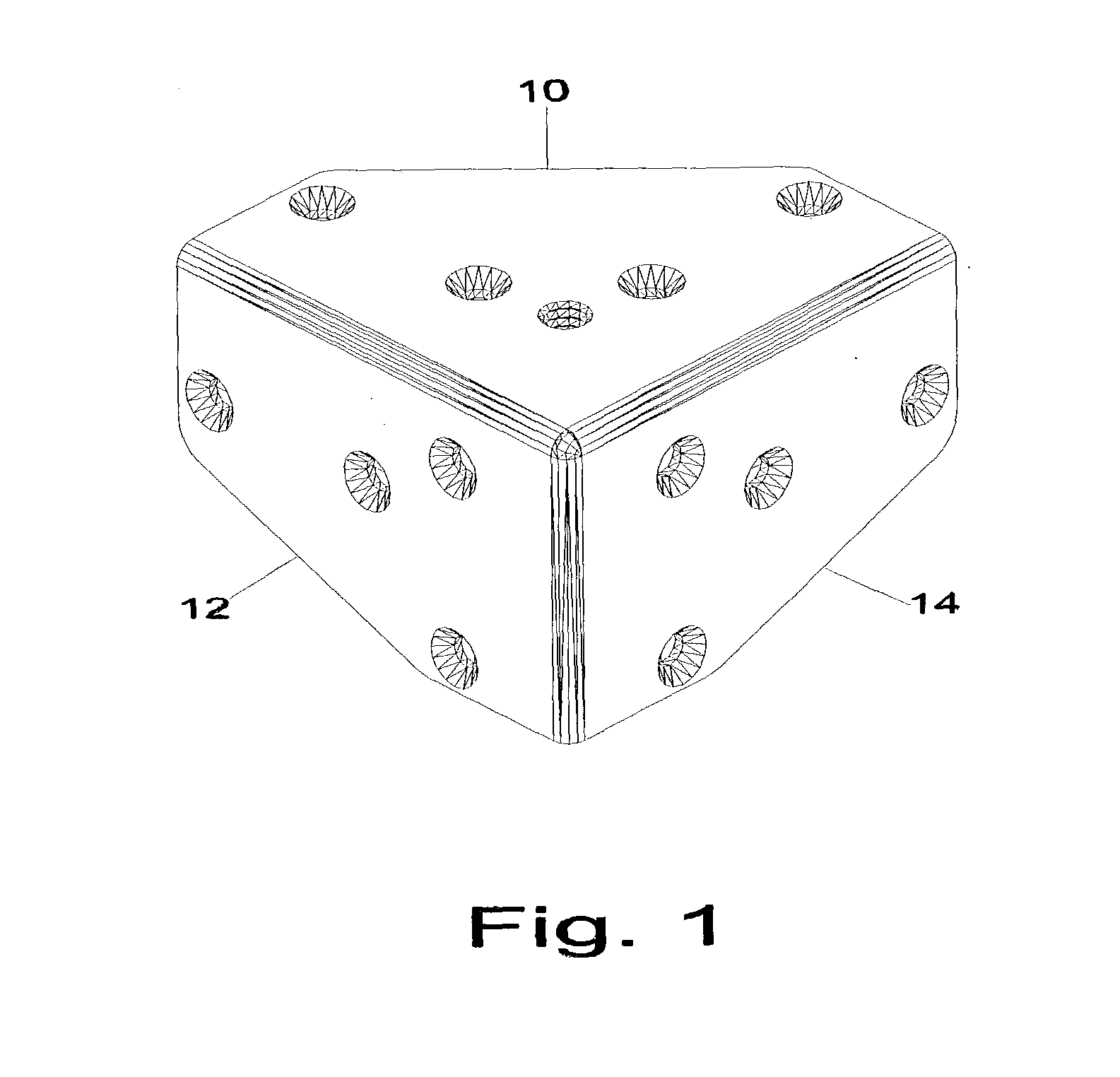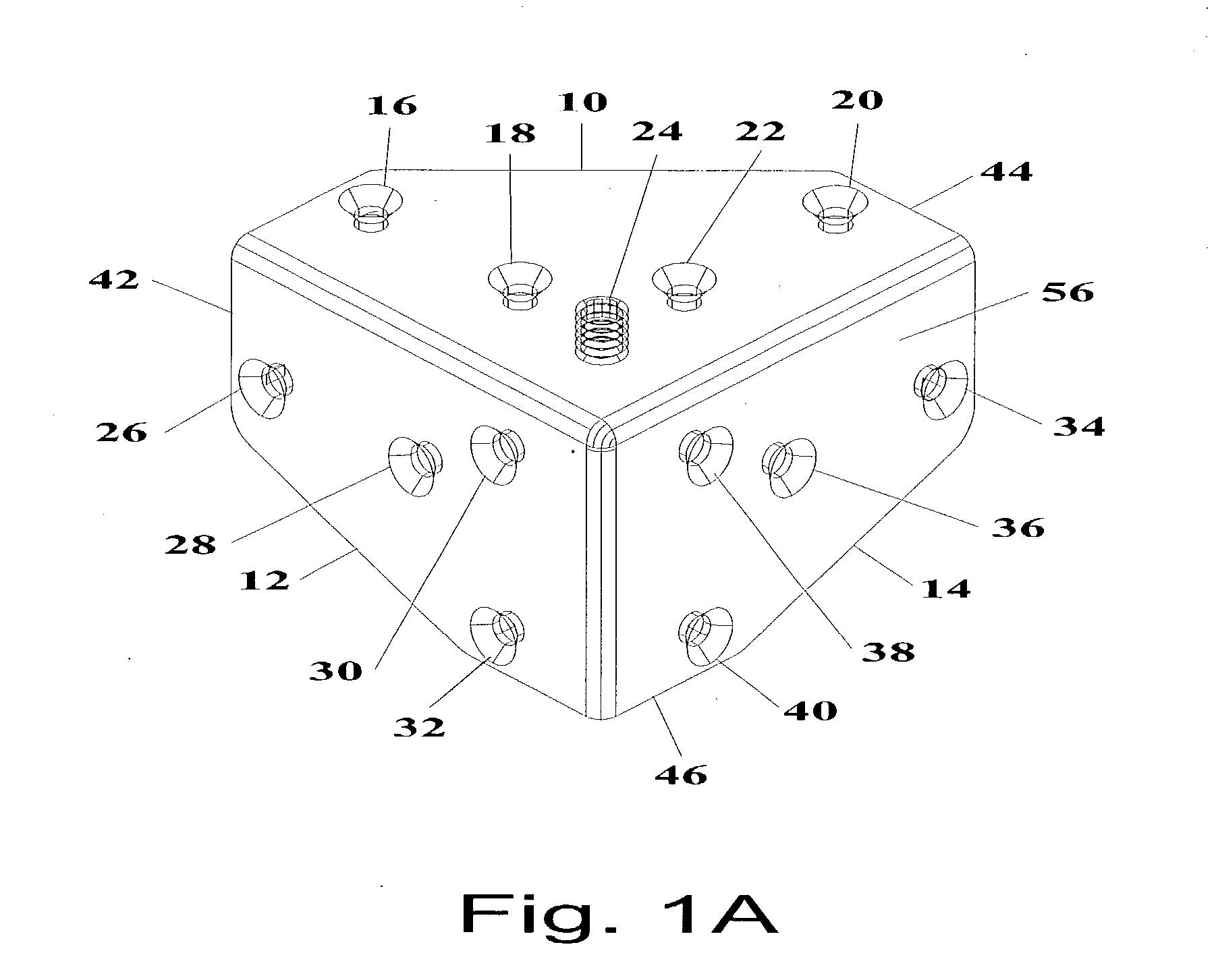Connecting corner for knock down racks
a technology of connecting corners and knock-down racks, which is applied in the direction of dismountable cabinets, movable shelf cabinets, mechanical instruments, etc., can solve the problems of reducing freight costs, reducing the ease of assembly of enclosures, and affecting the stability of the enclosur
- Summary
- Abstract
- Description
- Claims
- Application Information
AI Technical Summary
Problems solved by technology
Method used
Image
Examples
Embodiment Construction
. 1 AND 1A--OUTER EMBODIMENT
[0042] An outer embodiment of the connecting corner of the present invention is illustrated in FIG. 1 (full outer view) and FIG. 1A (detailed outer view). The connecting corner has a solid body of uniform cross section consisting of a solid metal, which is formed or molded. A layer of (black clad finish) plating 56 covers all the surfaces of the corner. In the outer embodiment, the body is made of metal, such as cast aluminum. However, the body can consist of any other material that can be formed or molded without fracturing, such as aluminum, molded plastic, such as polyethylene, polypropylene, rubber, various impregnated or fibrous materials, various plastic material, that can withstand the stress and various weight factors.
[0043] Base 10 of connecting corner has counter sunk hole 16 and hole 18 positioned to match up with holes in one surface of rack rail inserted in left leg rack rail entry slot 42. Counter sunk hole 20 and hole 22 are positioned to m...
PUM
 Login to View More
Login to View More Abstract
Description
Claims
Application Information
 Login to View More
Login to View More - R&D
- Intellectual Property
- Life Sciences
- Materials
- Tech Scout
- Unparalleled Data Quality
- Higher Quality Content
- 60% Fewer Hallucinations
Browse by: Latest US Patents, China's latest patents, Technical Efficacy Thesaurus, Application Domain, Technology Topic, Popular Technical Reports.
© 2025 PatSnap. All rights reserved.Legal|Privacy policy|Modern Slavery Act Transparency Statement|Sitemap|About US| Contact US: help@patsnap.com



